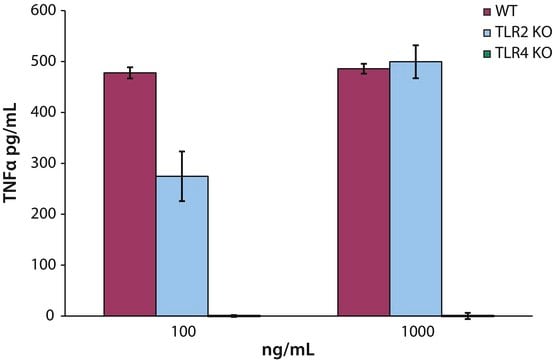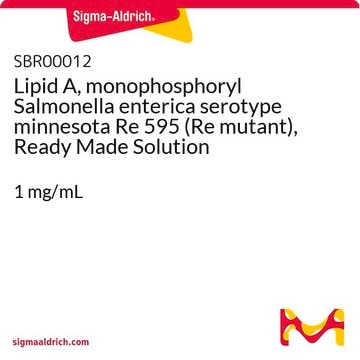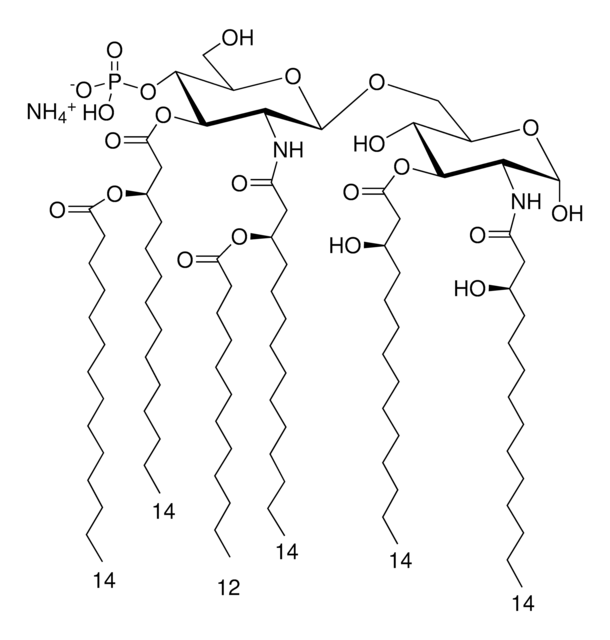699500P
Avanti
Kdo2-Lipid A (KLA)
Avanti Research™ - A Croda Brand
Synonym(s):
KLA
About This Item
Recommended Products
description
Di[3-deoxy-D-manno-octulosonyl]-lipid A (ammonium salt)
Assay
>99% (HPLC)
form
powder
packaging
pkg of 1 × 1 mg (699500P-1mg)
manufacturer/tradename
Avanti Research™ - A Croda Brand
application(s)
lipidomics
lipid type
bioactive lipids
shipped in
dry ice
storage temp.
−20°C
SMILES string
O[C@H]([C@@H](CO[C@@H]([C@@H]1NC(C[C@H](OC(CCCCCCCCCCC)=O)CCCCCCCCCCC)=O)O[C@H](CO[C@]2(C([O-])=O)C[C@@H](O[C@@]3(C([O-])=O)O[C@H]([C@H](O)CO)[C@H](O)[C@H](O)C3)[C@@H](O)[C@@H]([C@H](O)CO)O2)[C@@H](OP([O-])(O)=O)[C@@H]1OC(C[C@H](OC(CCCCCCCCCCCCC)=O)CCCCCC
General description
Application
- as a toll like receptor (TLR) ligand source in immortalized murine macrophage culture media
- in 2H-,13C-,15N-labeled OprHΔL1ΔL4 in 1,2-dihexanoyl-sn-glycero-3-phosphocholine (DHPC) micelles, to determine the specific residues of OprHΔL1ΔL4 interacting with lipopolysaccharides (LPS) source
- as a component of LPS stock to study its role in lipopolysaccharide induced prion protein conversion
Biochem/physiol Actions
Packaging
Other Notes
Legal Information
Storage Class Code
11 - Combustible Solids
WGK
WGK 3
Flash Point(F)
No data available
Flash Point(C)
No data available
Certificates of Analysis (COA)
Search for Certificates of Analysis (COA) by entering the products Lot/Batch Number. Lot and Batch Numbers can be found on a product’s label following the words ‘Lot’ or ‘Batch’.
Already Own This Product?
Find documentation for the products that you have recently purchased in the Document Library.
Customers Also Viewed
Our team of scientists has experience in all areas of research including Life Science, Material Science, Chemical Synthesis, Chromatography, Analytical and many others.
Contact Technical Service









